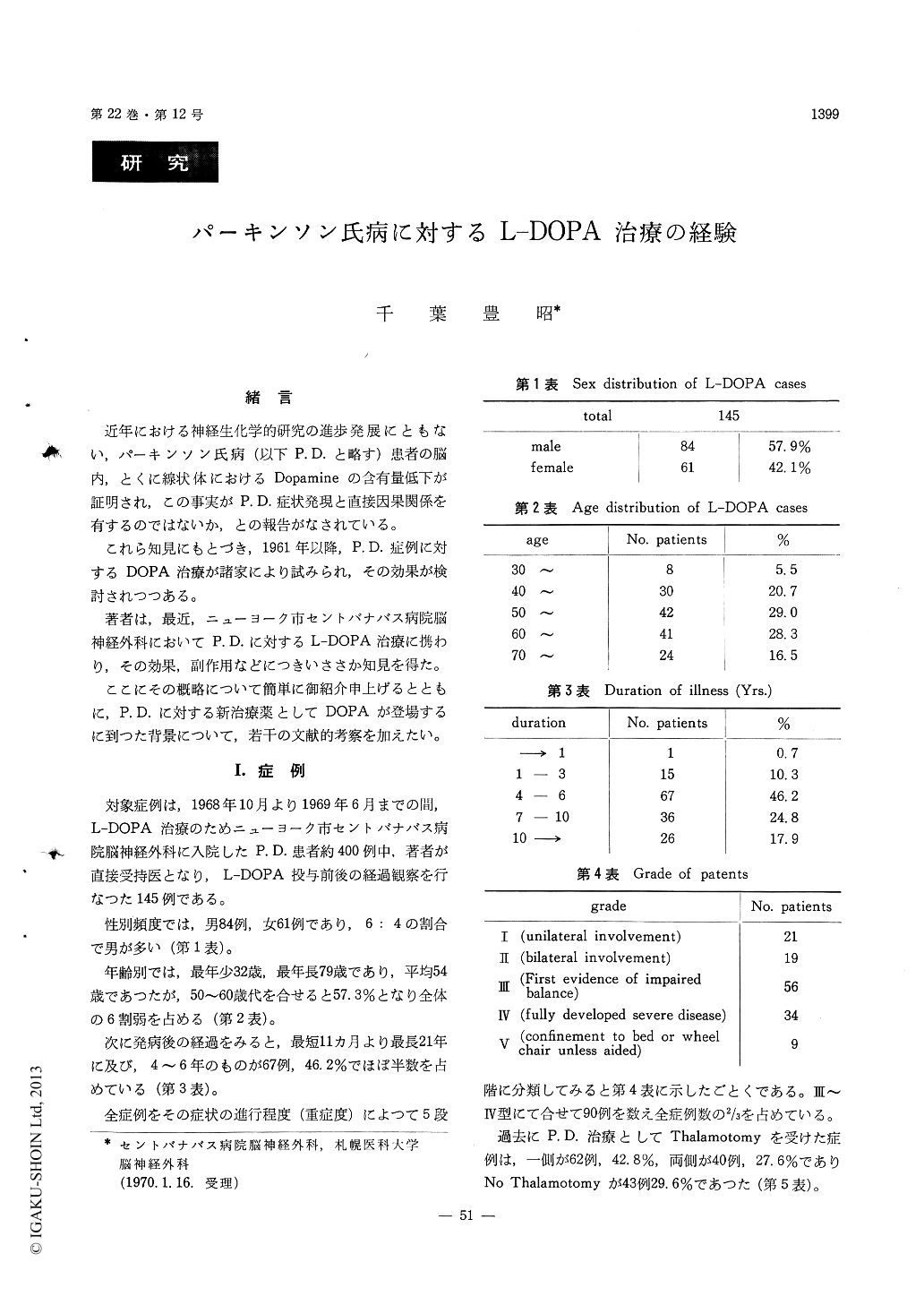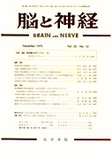Japanese
English
- 有料閲覧
- Abstract 文献概要
- 1ページ目 Look Inside
緒言
近年における神経生化学的研究の進歩発展にともない,パーキンソン氏病(以下P. D. と略す)患者の脳内,とくに線状体におけるDopamineの含有量低下が証明され,この事実がP. D. 症状発現と直接因果関係を有するのではないか,との報告がなされている。
これら知見にもとづき,1961年以降,P. D. 症例に対するDOPA治療が諸家により試みられ,その効果が検討されつつある。
According to the fact that parkinsonian symptoms are related to a depletion of dopamine in the brain, many investigators have recently began to use L-DOPA, immediate precursor of dopamine and able to cross the BBB, in the treatment of parkinsonism.
The presented paper discussed about the clinical experiences with L-DOPA in the treatment ofparkinsonism on the basis of 145 cases who were admitted and treated at St. Barnabas Hospital since November 1968 to June 1969.
Generally speaking, 80. 7% of the patients had shown some improvement of the symptoms and especially such symptoms as rigidity, bradykinesia, difficulty of speech and ambulation were able to get moderate or significant improvement. On the other-hand, it did'nt appear that L-DOPA was capable of significantly relieving tremor.
The side reaction of L-DOPA included nausea, vomiting, anorexia, postural hypotension, chorea-liked abnormal movement, and psychic manifesta-tions (hallucination, agitation and depression). However, most of these symptoms were transient so that none of the patients had to discontinue the administration of L-DOPA due to side reaction ex-cept three, two of whom due to serious psychic manifestations and one due to severe abnormal movement of tongue.
Although it is too early to make a final decision of the effect of L-DOPA for parkinsonism, it seems to be promising and more advisable to use than any other antiparkinsonian drugs ever been used.

Copyright © 1970, Igaku-Shoin Ltd. All rights reserved.


